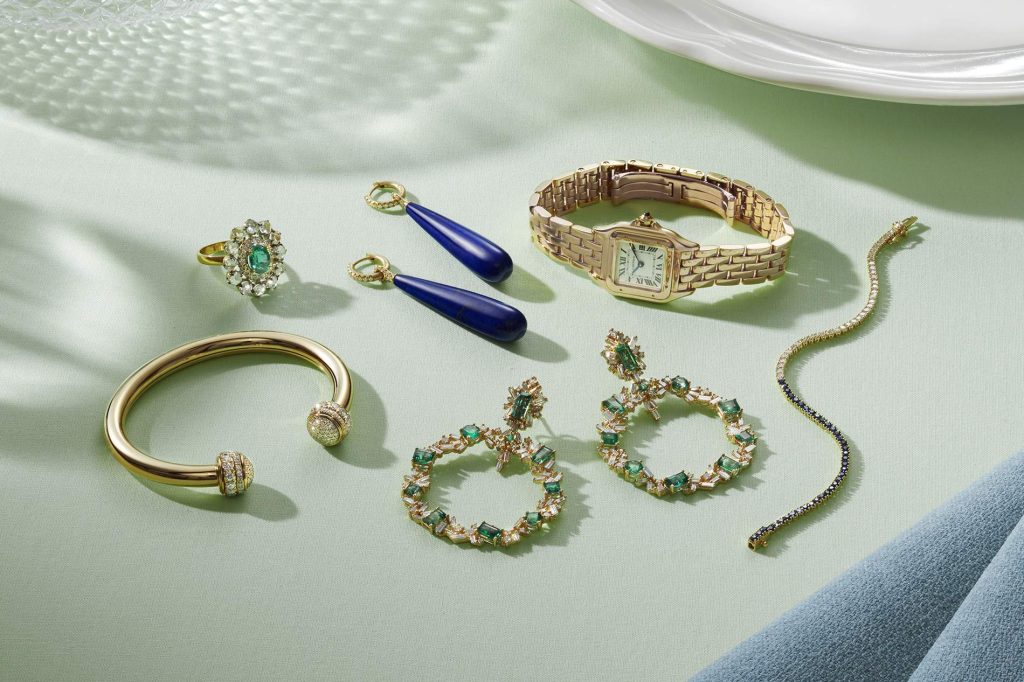
The Smart Investor’s Guide to Jewelry Investing
Jewelry investing is a fascinating and frequently disregarded possibility in the dynamic world of investments.
Jewelry investing is a fascinating and frequently disregarded possibility in the dynamic world of investments. To diversify their holdings and protect themselves from market fluctuations, astute investors are beginning to see the value in precious metals, jewels, and one-of-a-kind objects, in addition to the more conventional assets like real estate, stocks, and bonds.
Whether you’re a seasoned collector or a newcomer to the realm of luxury assets, this comprehensive guide will equip you with the knowledge and strategies to navigate the sparkling world of jewelry investing like a pro.
Understanding the Appeal of Jewelry Investing

Investing in jewelry offers a unique blend of tangible assets, intrinsic value, and potential for appreciation. Here are some of the key advantages that make this investment avenue so alluring:
- Tangible Asset: Unlike stocks or bonds, which represent ownership in companies or debt instruments, jewelry is a physical asset you can hold and enjoy.
- Intrinsic Value: Precious metals like gold, platinum, and silver, as well as gemstones like diamonds, rubies, and sapphires, possess inherent value that transcends market fluctuations.
- Potential for Appreciation: Rare and exceptional pieces can appreciate significantly over time, especially if they are from renowned designers or have historical significance.
- Diversification: Adding jewelry to your investment portfolio can help mitigate risk by diversifying your assets beyond traditional investments.
- Portable Wealth: Jewelry is a highly portable form of wealth, making it an attractive option for those seeking to safeguard their assets in uncertain times.
Strategies for Successful Jewelry Investing

To optimize profits and reduce risks, jewelry investing necessitates a strategic strategy, just like any other type of investment. Here are some tried-and-true tactics to think about:
1. Develop a Deep Understanding of the Market
Before investing in jewelry, familiarize yourself with the industry’s nuances. Analyze the various gemstones, precious metals, and design aesthetics. Obtain an understanding of the determinants of value, including but not limited to rarity, provenance, and craftsmanship.
2. Focus on Quality over Quantity
When it comes to jewelry investing, quality trumps quantity. Invest in exceptional pieces from reputable designers, brands, or eras. These pieces are more likely to retain or appreciate in value over time.
3. Consider Rare and Unique Pieces
While classic designs have their appeal, rare and unique pieces often command higher premiums in the market. Look for limited edition pieces, one-of-a-kind creations, or pieces with historical significance or fascinating backstories.
4. Diversify Your Jewelry Portfolio
Just as you would diversify a traditional investment portfolio, it’s wise to diversify your jewelry investments. Consider allocating funds across different types of precious metals, gemstones, and design styles to mitigate risk and maximize potential returns.
5. Work with Reputable Dealers and Experts
Building relationships with reputable jewelers, auction houses, and industry experts is crucial for successful jewelry investing. These professionals can provide valuable insights, authenticate pieces, and help you navigate the market with confidence.
6. Insure Your Investments
Protecting your jewelry investments is paramount. Ensure that your pieces are properly insured against loss, theft, or damage. Many specialized insurance policies are available for high-value jewelry collections.
Frequently Asked Questions
1. How do I determine the value of a piece of jewelry?
A combination of elements—design and craftsmanship, provenance (history and origin), market demand, and the quality and rarity of the precious metals and gemstones—determine the value of a given item of jewelry. It is advisable to have a certified gemologist or jewelry expert appraise your items.
2. Should I invest in new or vintage jewelry?
Both new and vintage jewelry can be excellent investment options. New pieces from renowned designers or brands may appreciate in value over time, while vintage or antique pieces can be rare and hold historical significance. Consider your personal preferences and investment goals when making your choice.
3. How do I care for and maintain my jewelry investments?
Consistent maintenance and care are critical in order to safeguard the value of your jewelry investments. Place the items in a cold, dry location that is shielded from moisture and direct sunlight. Regularly have them inspected and cleansed by a professional, and if necessary, consider re-polishing or re-plating.
4. Is jewelry investing a good way to diversify my portfolio?
Indeed, investing in jewelry can be a great strategy to spread out your holdings. As a tangible asset that may act as a hedge against inflation and market volatility, jewelry can be a wise addition to classic investment portfolios like equities and bonds.
5. What are the risks associated with jewelry investing?
Like any investment, jewelry investing carries certain risks. These include the potential for theft or loss, fluctuations in market demand and prices, and the possibility of acquiring counterfeit or misrepresented pieces. Working with reputable dealers, insuring your investments, and conducting thorough research can help mitigate these risks.
You Can Also Read Here Jacky Chou: A Journey of Entrepreneurial Success
